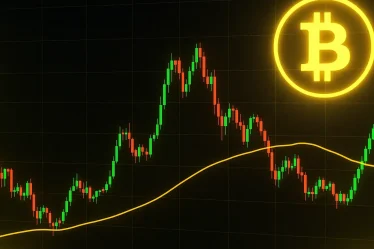
In recent weeks, Bitcoin has experienced a notable increase in trading volume, reaching levels not seen since March. This surge comes amidst significant price fluctuations, with the cryptocurrency’s value dipping below $105,000. The heightened activity suggests a renewed interest from institutional investors, even as the market grapples with volatility.
Market Dynamics and Institutional Interest
Bitcoin’s 7-day moving average of trading volume has risen to approximately $3.68 billion, marking the highest point in seven months. This uptick in volume coincides with a price decline, as Bitcoin currently trades at $104,900. The increased trading activity indicates that large-scale investors are re-entering the market, potentially signaling a reaccumulation phase where professional traders rebuild positions following recent price drops.
On October 10, Bitcoin’s price plummeted from $122,000 to about $105,000 after geopolitical tensions between the U.S. and China escalated over new tariffs. Some exchanges reported even lower prices, with Bitcoin dipping to $101,000. This sharp decline led to the liquidation of leveraged positions worth approximately $19 billion. However, subsequent analyses suggest that actual losses were closer to $2.31 billion, indicating that the initial figures may have been exaggerated.
Following the crash, Bitcoin briefly recovered to around $116,000 before experiencing further declines, settling just below $105,000. This downward trend triggered another wave of liquidations, affecting nearly 300,000 traders and resulting in positions worth approximately $1.1 billion being closed out.
Technical Analysis and Future Outlook
Despite recent price pressures, Bitcoin’s underlying market structure remains positive. Technical analysts have identified the $106,000 to $107,000 range as a major support zone. A breach of this level could lead to a test of the $100,000 mark. However, as long as this support holds, the broader bullish trend is considered intact.
Historically, October has been a strong month for Bitcoin, often referred to as “Uptober” due to recurring seasonal patterns that see significant gains in the latter half of the month. Data indicates that during this period, exchange reserves typically shrink as investors move coins into long-term storage, tightening supply and setting the stage for potential rallies.
In conclusion, while Bitcoin’s recent price volatility has led to significant liquidations and market uncertainty, the surge in trading volume and continued institutional interest suggest a resilient market. As October progresses, market participants will be closely watching for signs of a potential rebound, keeping in mind the historical trends that have characterized this period in previous years.



